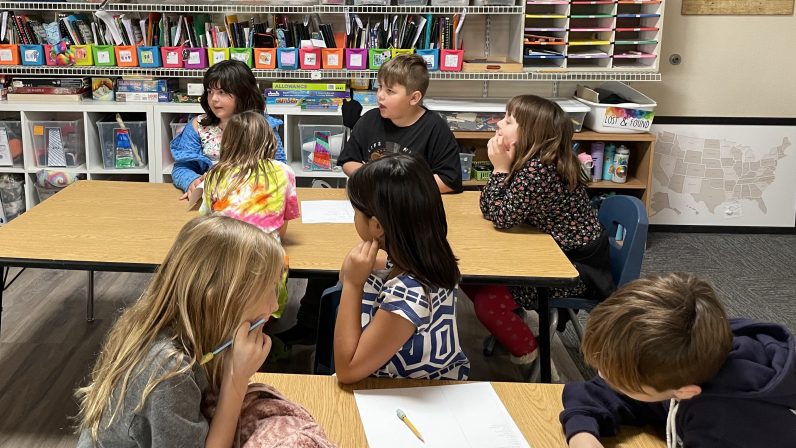Each year around this time, we learn about the life of Martin Luther King, Jr. and others, like Rosa Parks, who contributed to the Civil Rights Movement. Although social justice practices are ongoing, this time of year is an opportunity to hone in on activism.
I’ve always loved putting together studies, and the chance to delve into activism is particularly close to my heart. I love the surprises that occur when a curriculum emerges which is instigated by teachers and led by students. I chose to launch the study with both the 1st and the 2nd-4th grade classes using the book, To Change a Planet by Christina Soontornvat and illustrated by Rahele Jommepour Bell. Its beautiful text and illustrations point out challenges we face on Planet Earth and the importance of us coming together to help solve them.
After reading and discussing the book, both groups made a list of what an activist is. Their combined list of qualities looks like this:
- stand up for people and ideas
- good listeners and thinkers
- kind to people
- tough
- actively do things to help
- set up protests
- make change
- think fast
- trailblazers/change makers
- fair/brave/fierce
- peaceful
- make the world a better place
The 2nd-4th graders met in groups to brainstorm places/problems around the planet that need activism. Here are a few of their ideas:
- deforestation
- wars/guns/weapons
- water pollution/oceans
- animal poaching
- droughts
- natural disasters/earthquakes/floods
- over-fishing/fish farming
- cars producing pollution
- wildfires
- global warming
- violence
- golf courses
In the coming weeks we’ll learn about as many young activists as we can, including Greta Thunberg, Malala, and Boyan Slat, the young Dutch activist who has been working on cleaning up the Great Pacific Garbage Patch. We’ll be researching, writing, sharing, and creating projects about our learning.
The challenge with a study like this is to present facts without overwhelming or making them feel helpless and scared. The emphasis will be on what we can do collectively to turn things around by taking action. Through writing this year the children have found and used their voices, and I explained to them that now is a time to practice using them. I said this study is like training to be an activist. At the end of the book, the last illustration shows a child holding the Earth in their hands. The 2nd-4th graders discussed the symbolism of this image. One child was able to articulate that it’s up to us and the future generations to work together to save the Earth. I have no doubt that this crew will make a big difference in the days and years to come.

